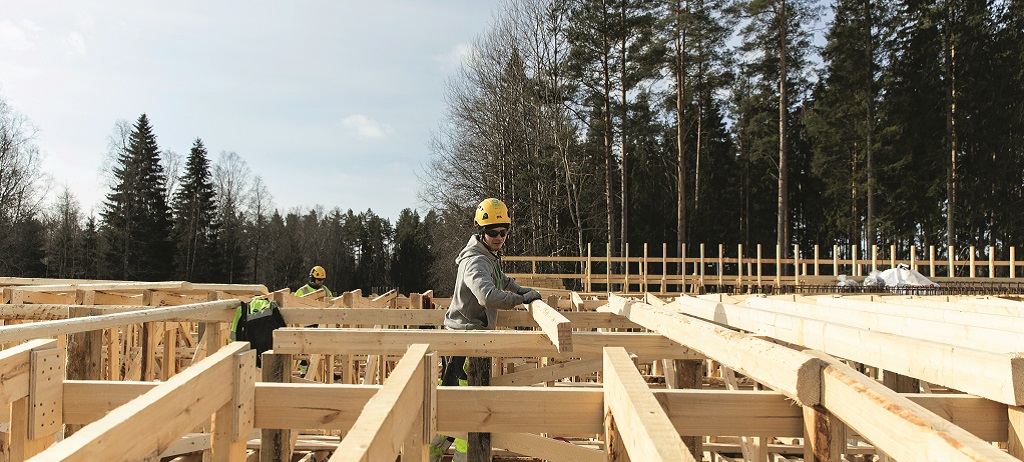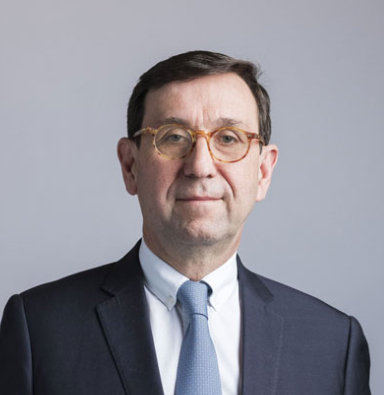
The Bouygues group works to create value over the long term and share it with its stakeholders. It has defined a strategic framework through which its business segments roll out their operational strategies in order to fulfil the Group’s mission which, as our pledges make clear, is to make life better every day for as many people as possible. Since 2020, the Group has set targets for reducing its carbon footprint and that of its customers at a pace consistent with the Paris Agreement.
Group strategy
The acquisition of Equans, which we all have a duty to make a success, is a fantastic opportunity to create value over the long term for all of the Group’s stakeholders.
Deputy CEO
Group Chief Financial Officer

The Bouygues group’s business segments drive growth over the long term since they all satisfy essential needs and operate in buoyant sectors. Evidence from recent years shows that its diverse business model is a source of resilience, enabling it to cushion the Group from fluctuating business cycles.
The Group provides its business segments with the means and resources they need to grow and achieve their strategic goals. Bouygues SA sets the overall strategic vision, contributes specialist expertise and maintains consistent practices across the Group, while allowing space for distinctive approaches. The business segments’ performance depends on meticulous management and on operational and financial action plans. It is further boosted by innovation, which aims to add ever increasing value added to products and services, to reduce greenhouse gas emissions and to preserve biodiversity.
The value created, primarily expressed in the form of cash flow generation, is invested in a way that enables the business segments to grow and capture targeted external growth opportunities, such as the acquisitions of EIT by Bouygues Telecom and Destia by Colas, and the proposed merger between TF1 and M6. Likewise, the acquisition of Equans in 2022 presents an opportunity for Bouygues to become a world leader in a high-growth sector at the intersection of the environmental, industrial and digital transitions, and will help build the Group’s resilience and support value creation. Moreover, the Group’s energies and services activities are asset light and generate a high level of cash.
In order to ensure its independence and future viability, the Group also maintains a robust financial structure which, along with its sound business model, is reflected in its favourable credit ratings from Standard & Poor’s and Moody’s.
A stable ownership structure that secures a long-term strategic vision
One of the main features of the Bouygues group is its special ownership structure featuring two major shareholders:
- SCDM (a company controlled by Martin and Olivier Bouygues), which owns 27.1% of the capital and has 29.6% of the voting rights (at 31 December 2022); and
- its employees, who own 21.3% of the capital and have 30.5% of the voting rights
(at 31 December 2022).
This structure is a result of the Bouygues group’s desire to give its employees a stake in the success of their company. It is now the CAC 40 company with the highest level of employee share ownership, which both reflects and strengthens the dedication of its workforce.
The Bouygues group also draws on a dividend policy that forms part of a long-term strategy.
THE BOUYGUE’S CLIMATE STRATEGY
Given the challenges posed by the climate emergency, the Bouygues group has defined a climate strategy to reduce greenhouse gas emissions over its entire value chain and help the customers and users of its products and services to achieve their decarbonisation targets.
Bouygues has made a tangible pledge to reduce its carbon footprint and that of its customers by 2030. The targets for reducing greenhouse gas emissions chosen by each of the Group’s business segments have been adjusted as part of the process to obtain endorsement by the Science[1]Based Targets initiative (SBTi) a.
Following Colas in 2021, Bouygues Telecom obtained endorsement for its short-term targets in 2022 from SBTi. Bouygues Construction, Bouygues Immobilier and TF1 also filed their targets with SBTi in 2022, and Equans plans to do the same in 2023.
In addition to setting their short-term targets, the business segments have also outlined the main drivers to be rolled out in the short and mid-terms and the metrics for tracking them.
SBTi endorsement is both recognition of the relevance of our Climate strategy and a guide that will help us to improve further.
Group Deputy CEO

Besides setting targets and describing how they intend to achieve them, in 2022 the Group’s business segments also launched all or some of the tangible actions of the Climate strategy:
- More robust carbon audit calculations, as well as product lifecycle assessments.
- For scopes 1 and 2: modification of the energy sources used and actions to reduce energy use (ISO 50 001, monitoring of energy use and worksite oversight, energy efficiency etc.).
- For scope 3, the actions carried out related to eco-design, an increase in the amount of “low-carbon” material (low-carbon concrete, timber, etc.), the development of the circular economy, changes to current ranges in order to offer more sustainable products and services that are adapted to tomorrow’s climate and support for Group customers and suppliers to help them reduce their carbon footprint and resource use together.
Our carbon footprint
(with Bouygues Energies & Services and excluding Equans)
Greenhouse gas emissions by sector of activity (Scopes 1, 2 et 3A) (%) (2022)
- Bouygues Construction: 23.10
- Bouygues Immobilier: 1.80
- Colas: 50.00
- TF1: 1.80
- Bouygues Telecom: 3.80
- Equans: 19.30
Greenhouse gas emissions by source (%) (2022)
- Materials and equipment: 58.00
- Energy: 14.00
- Utilisation et fin de vie des produits vendus: 17.00
- Divers : 11.00
For scopes 1, 2 and 3a, Bouygues’ carbon footprint was a little more than 15 million tonnes of CO2 equivalent in 2022. Most emissions are attributable to purchases by the Group and to the energy used by worksites and other installations. The construction businesses account for a decisive part of this result. The Group and each of its business segments manage the Climate strategy and its objectives within a specific governance structure, with regular monitoring by Bouygues’ Ethics, CSR and Patronage Committee and Board of Directors.